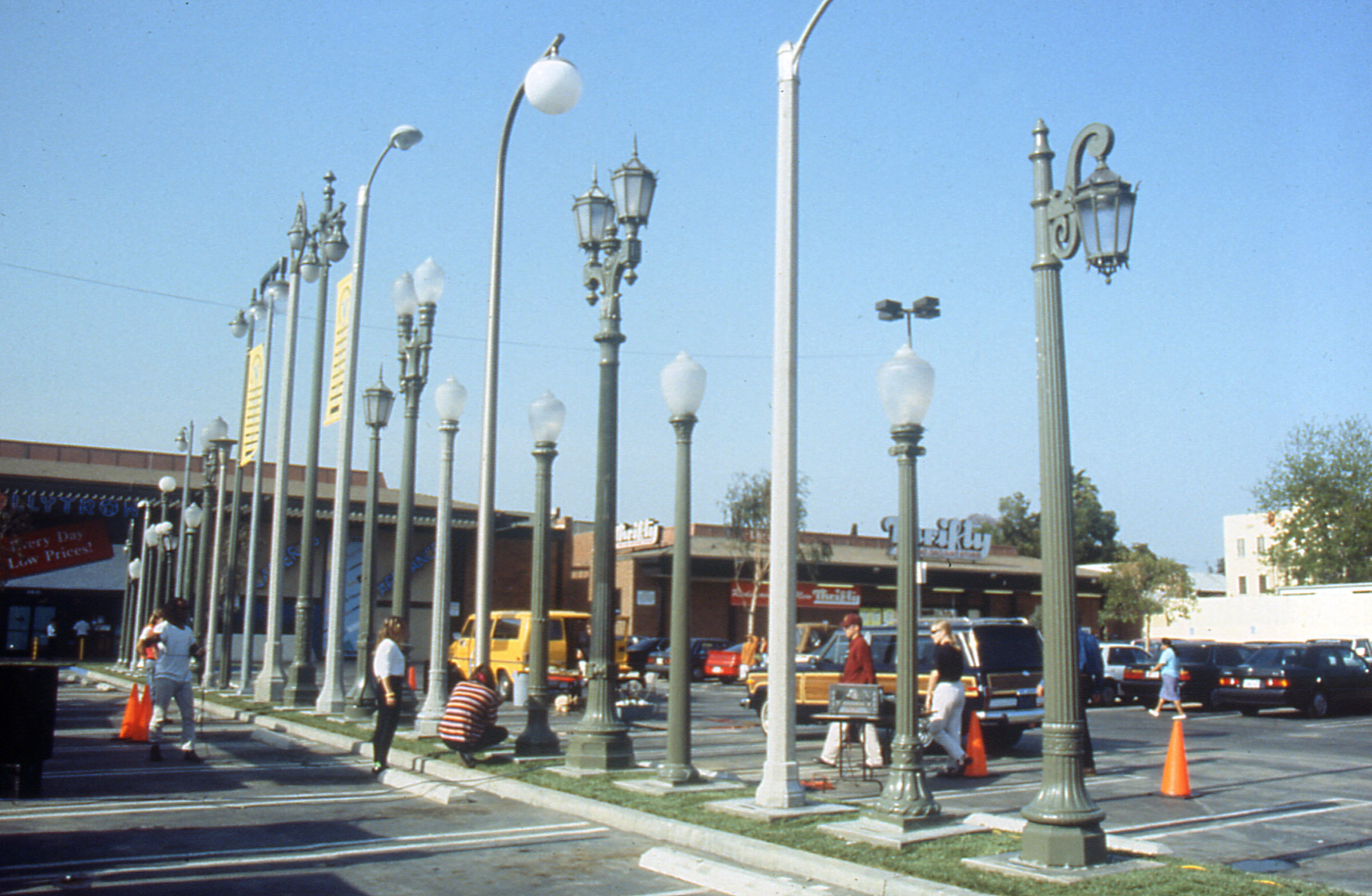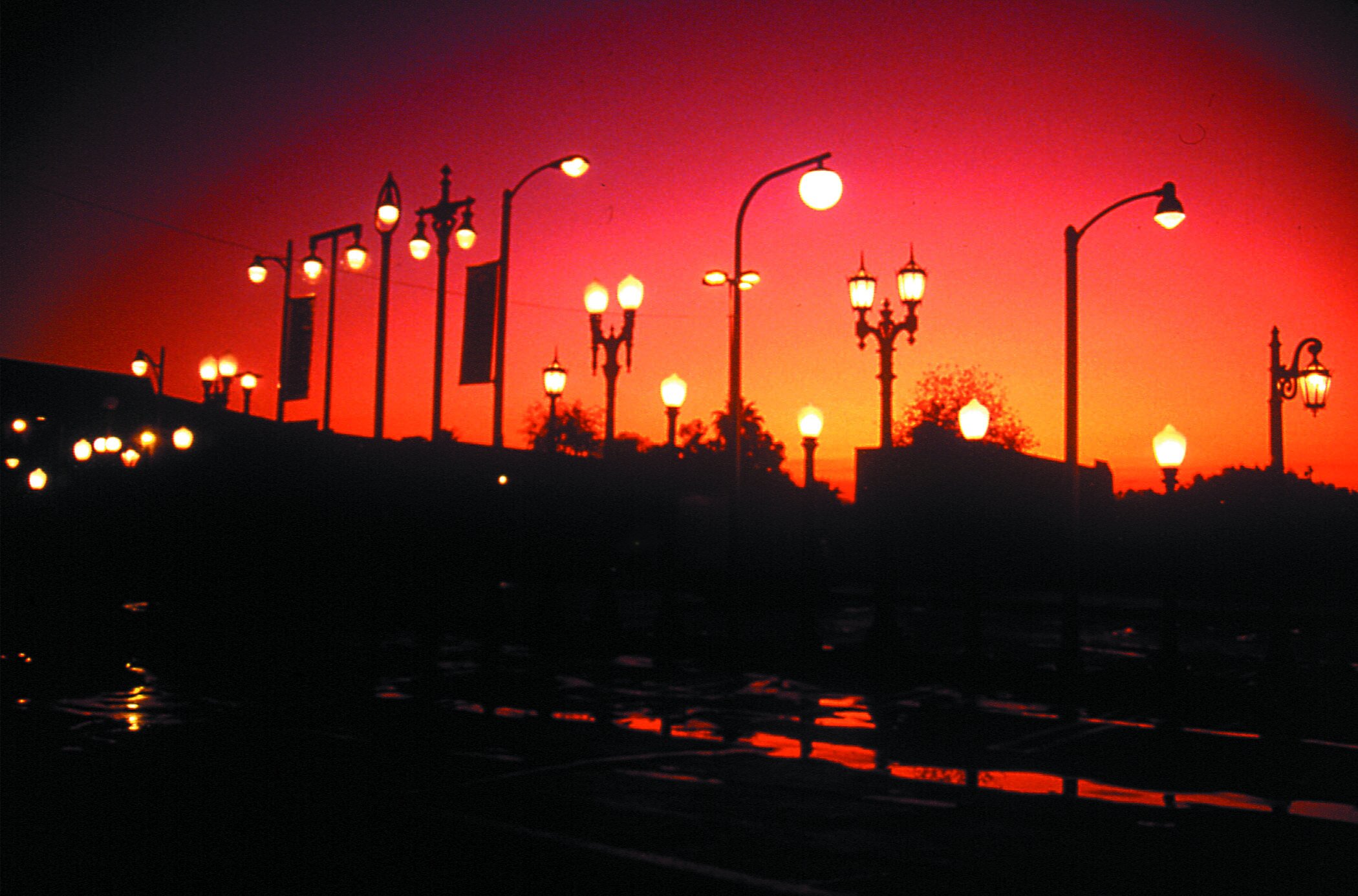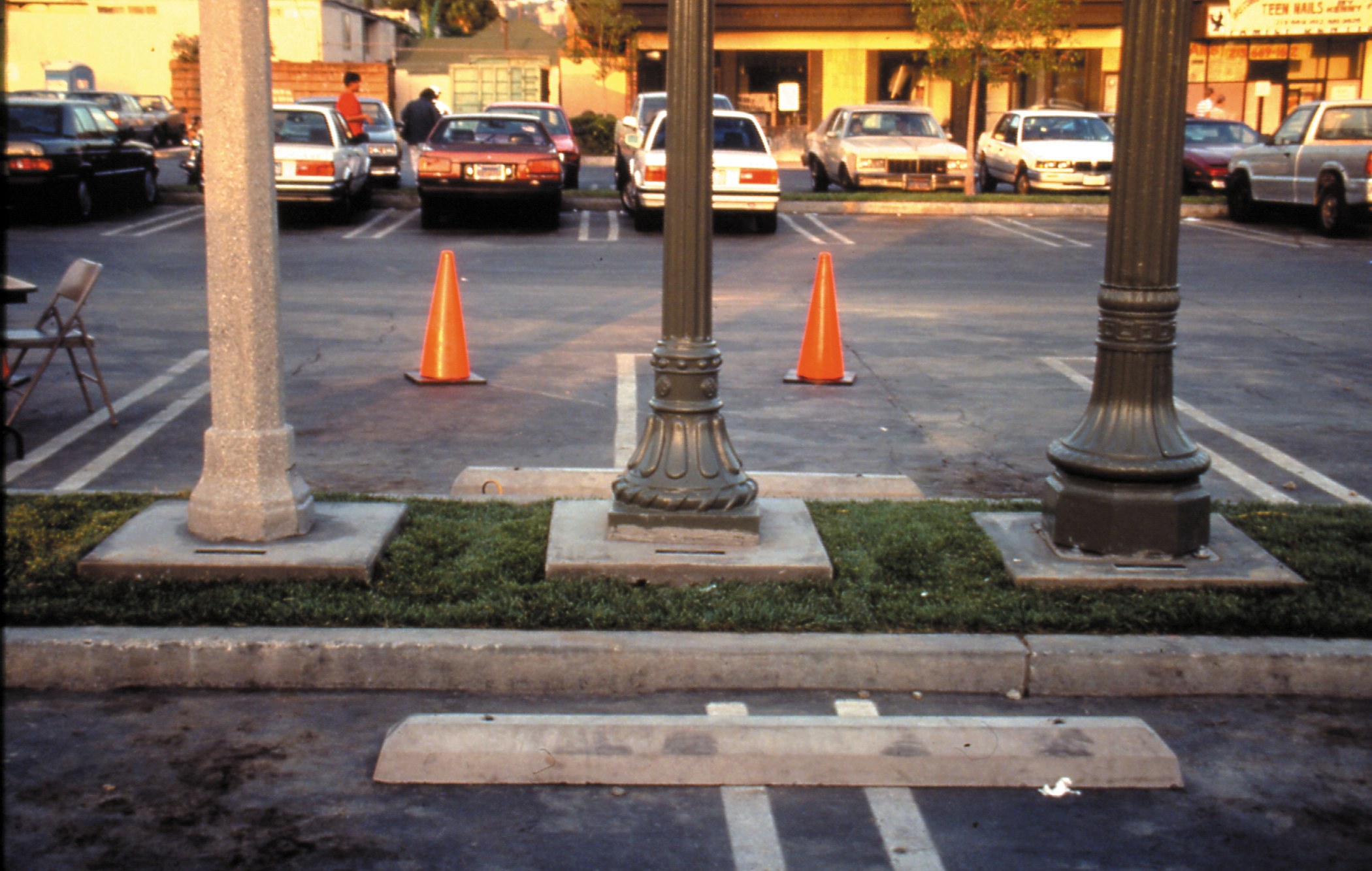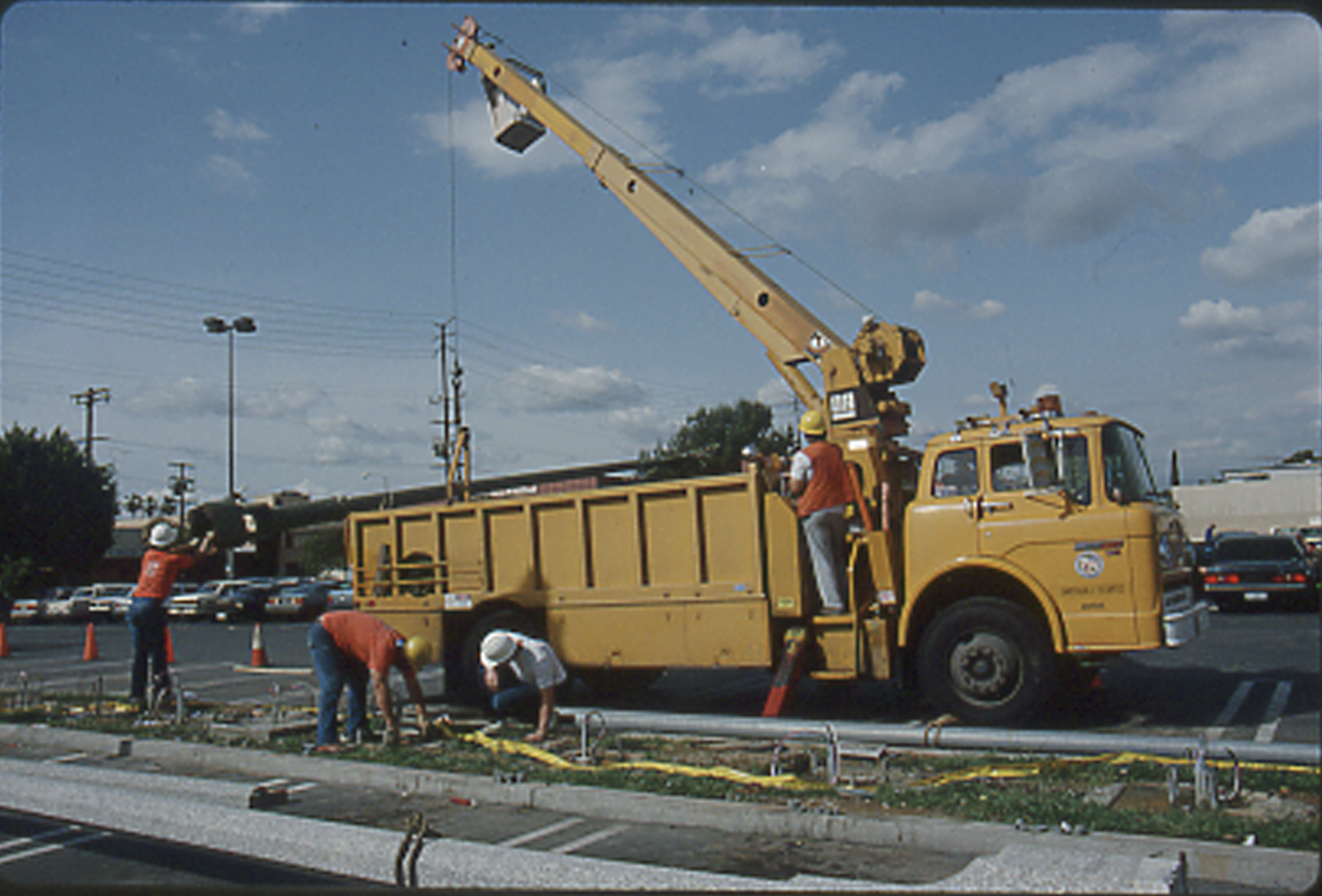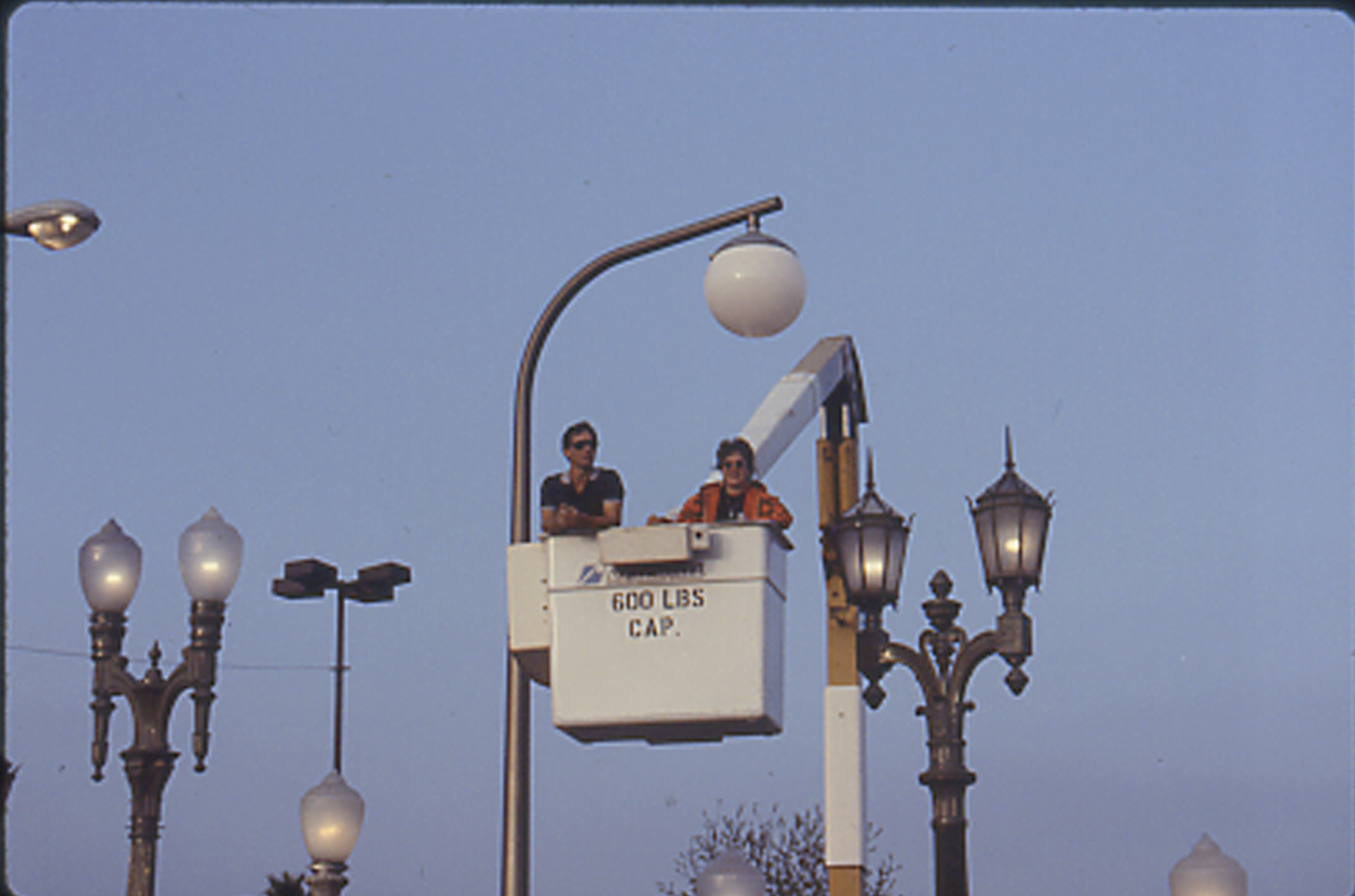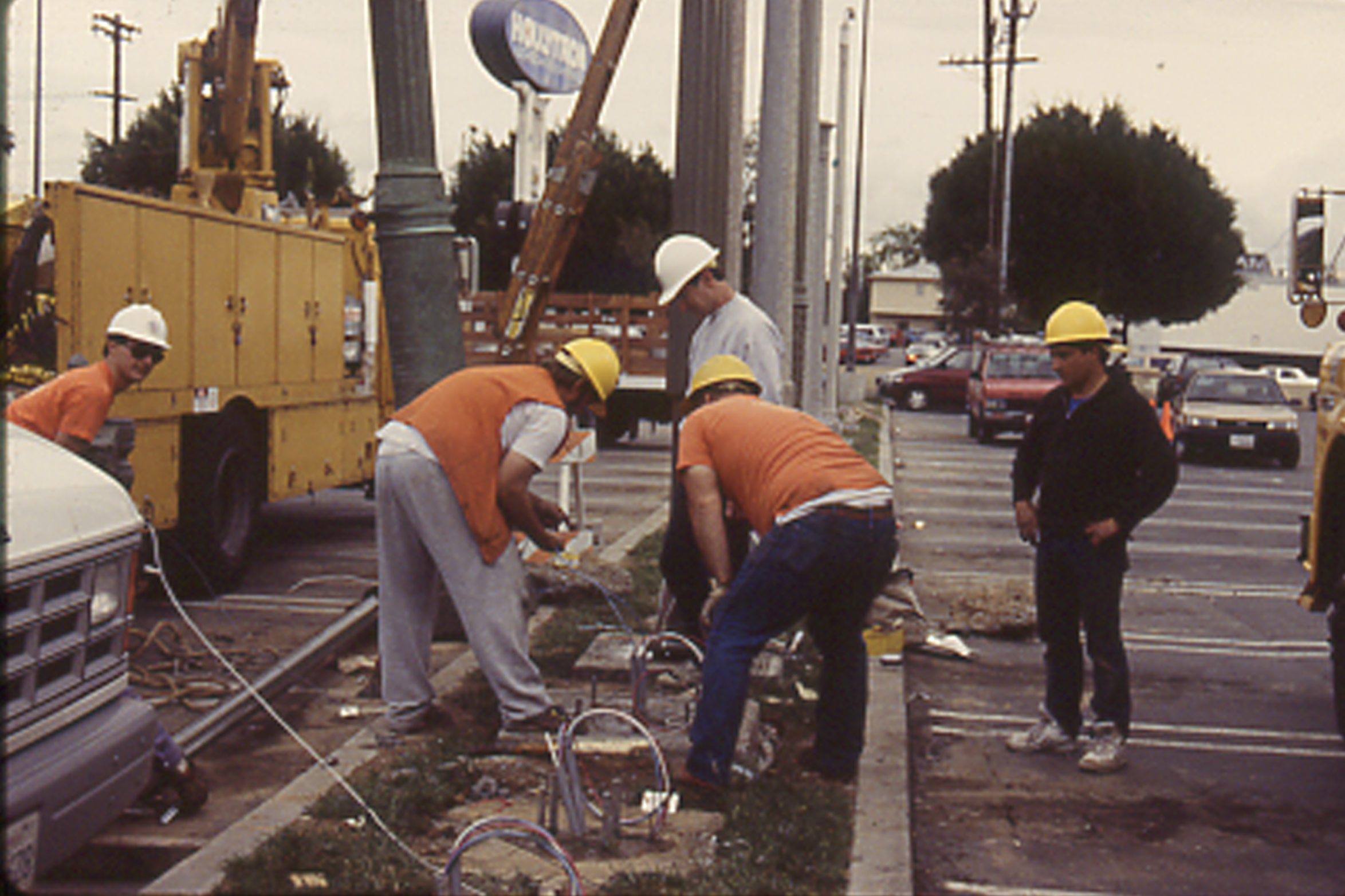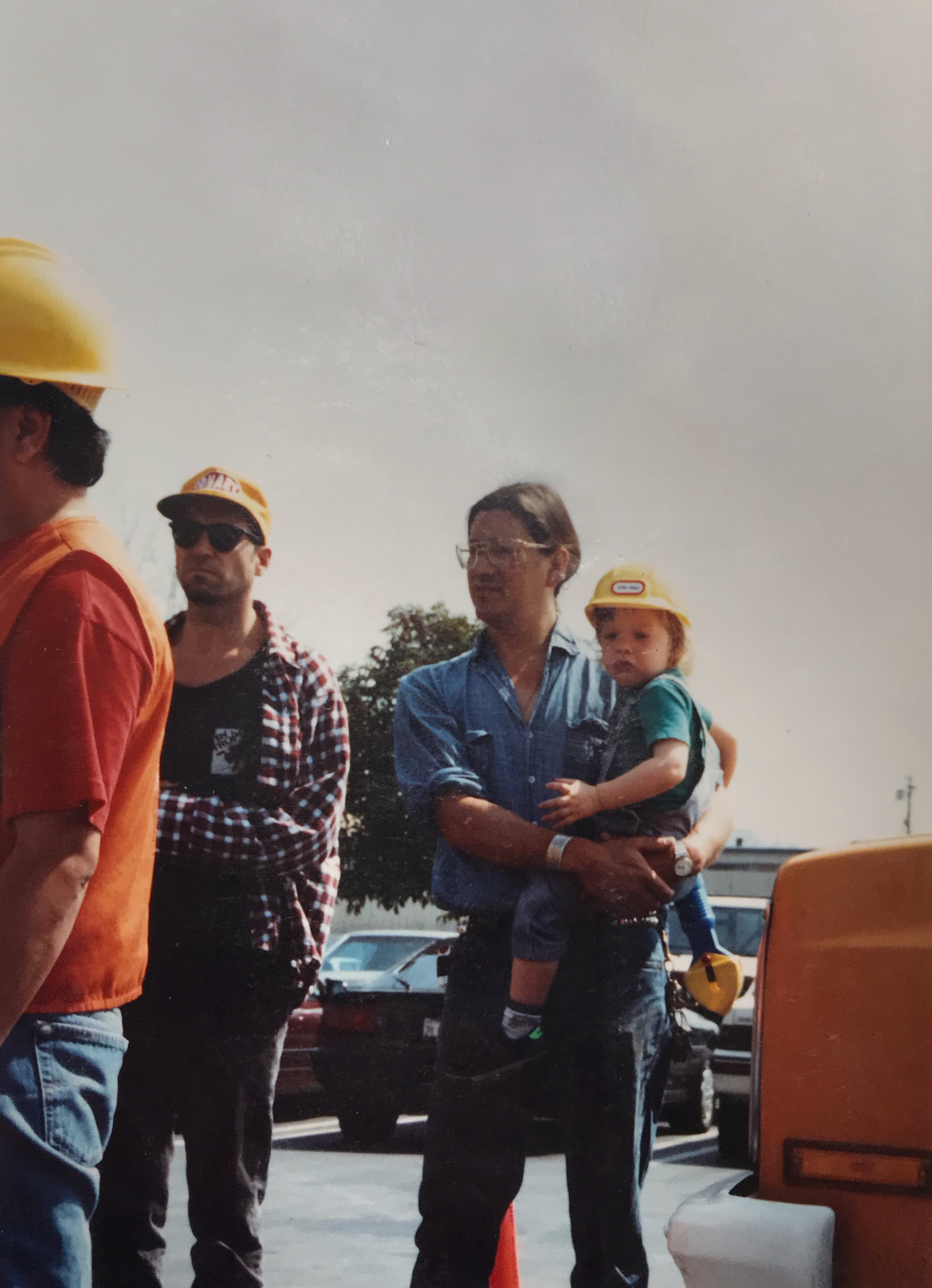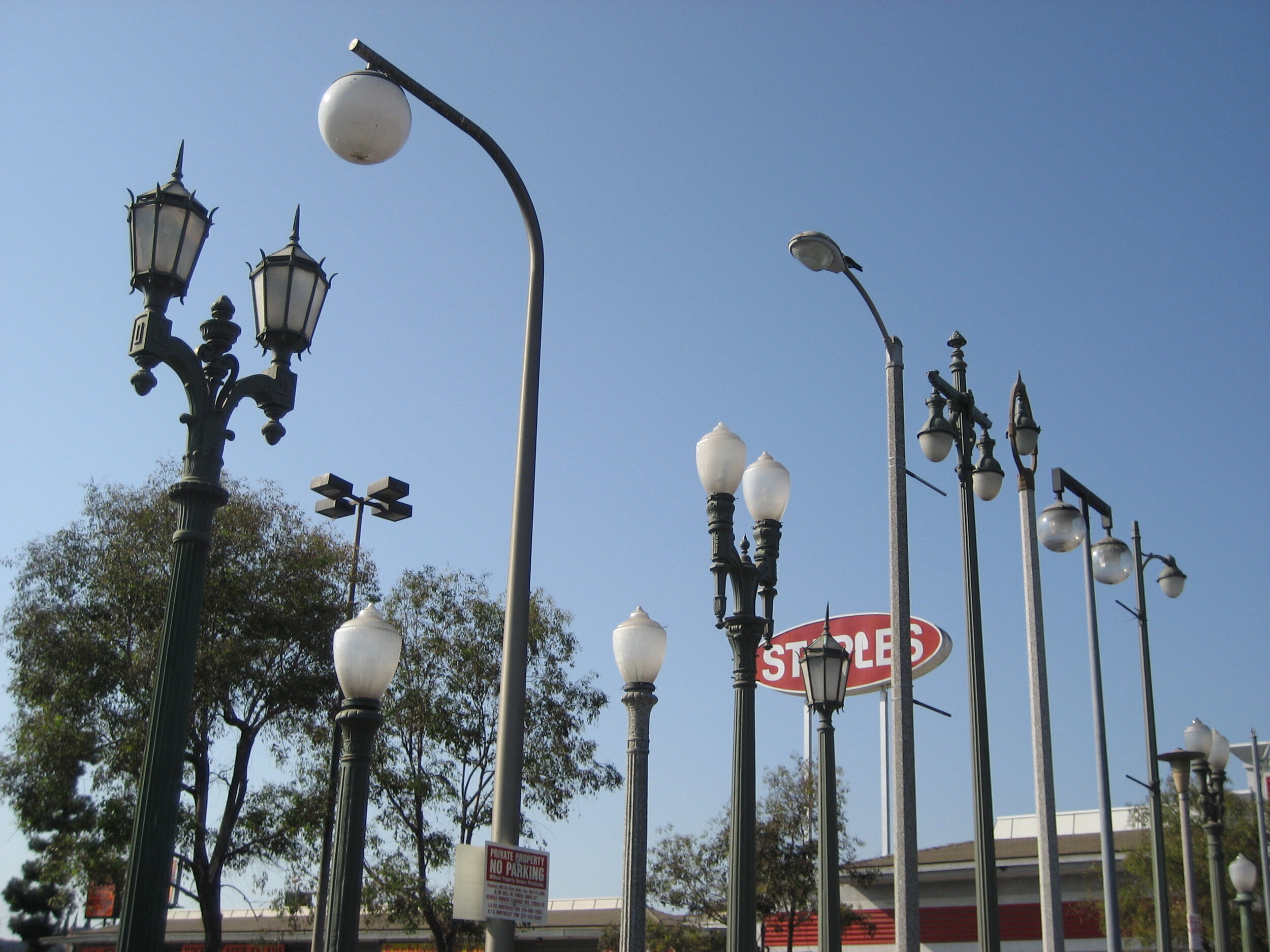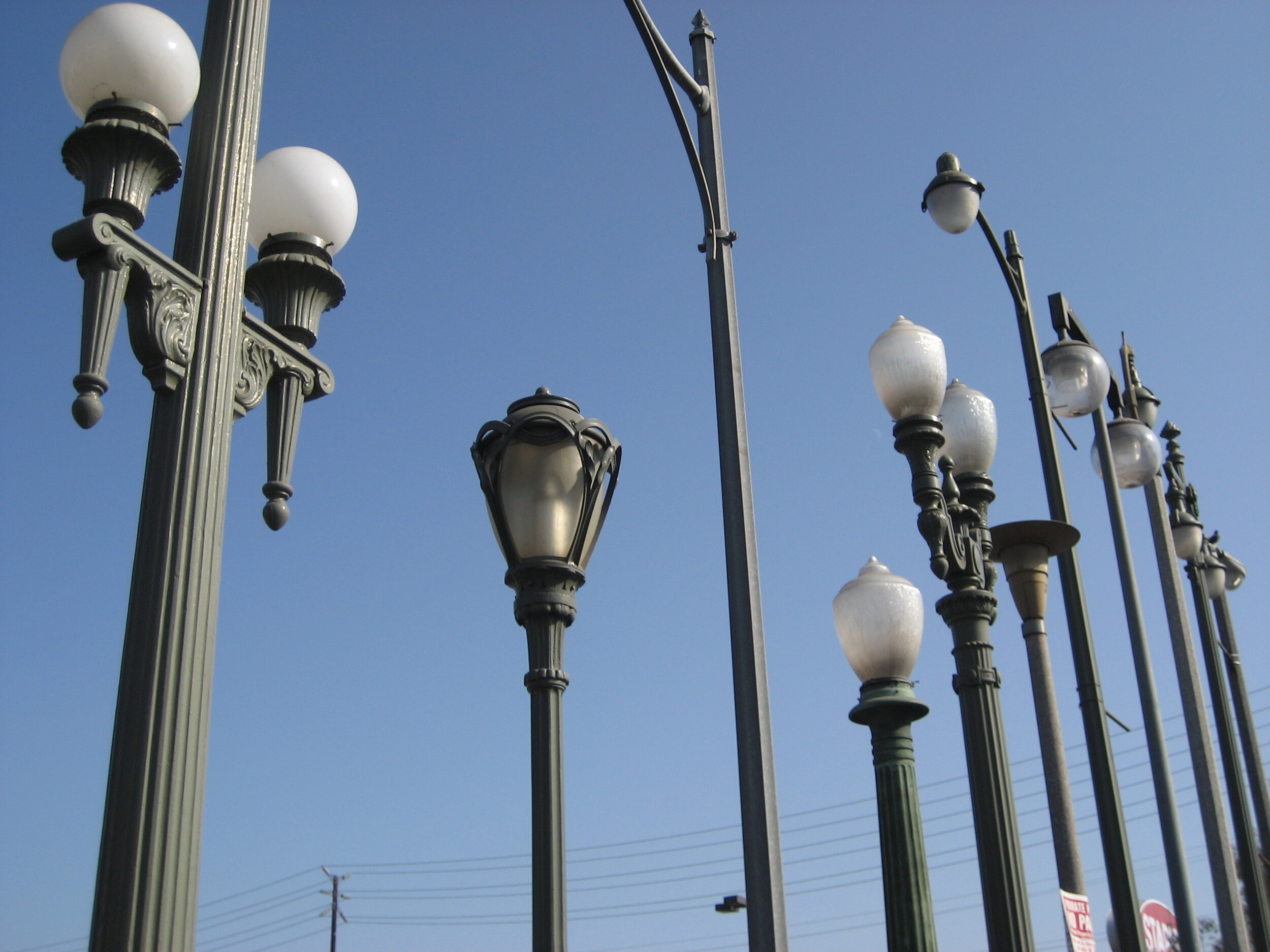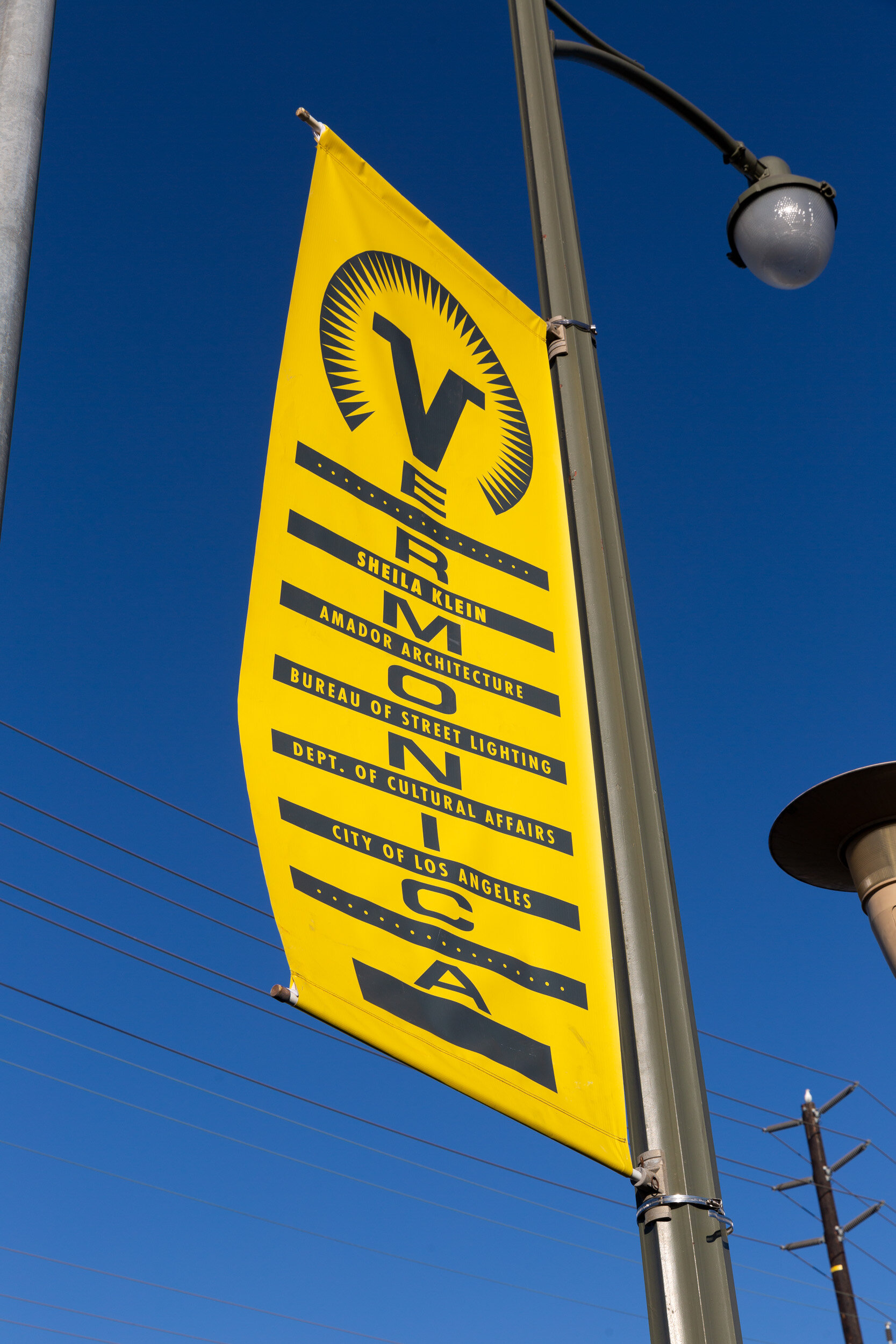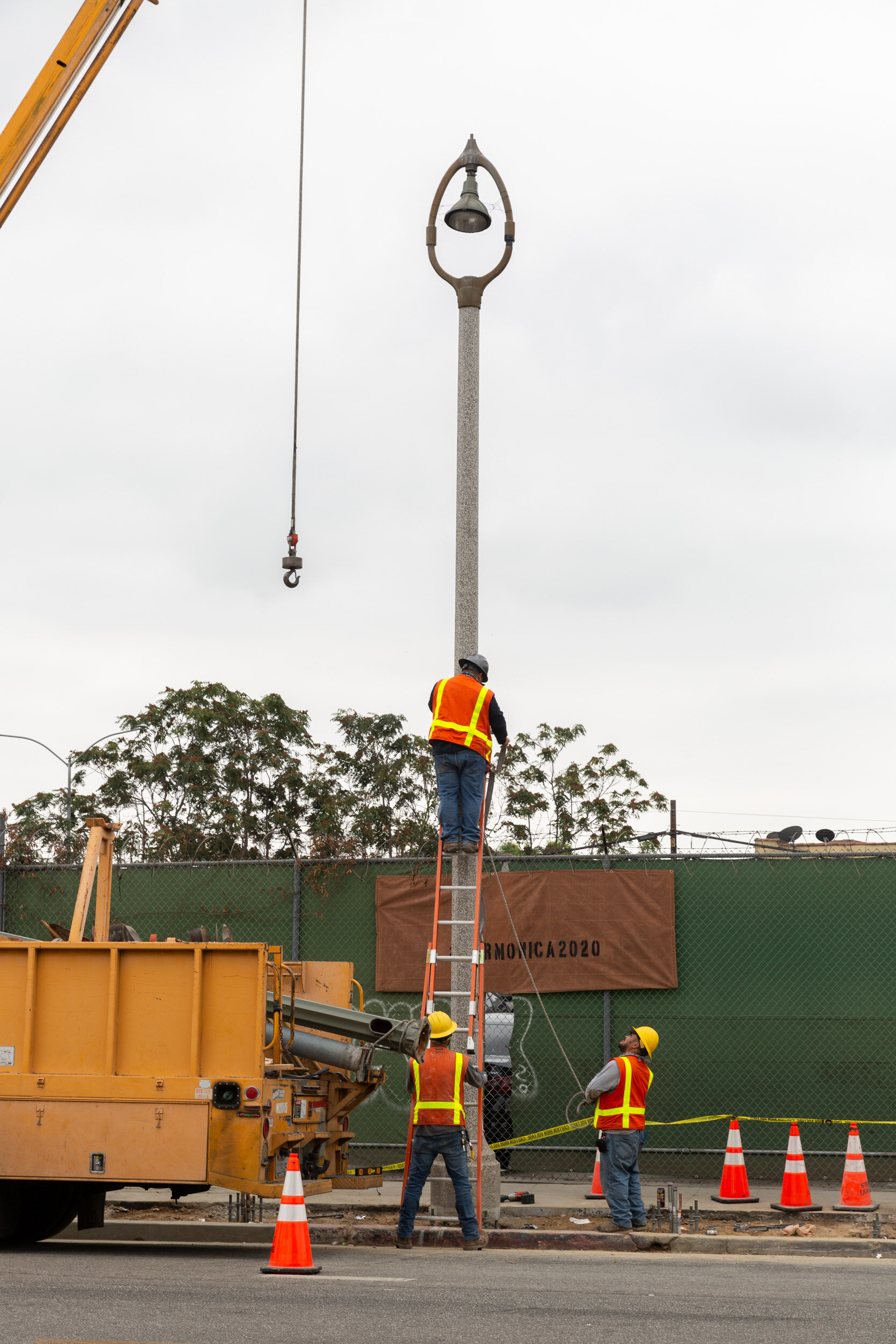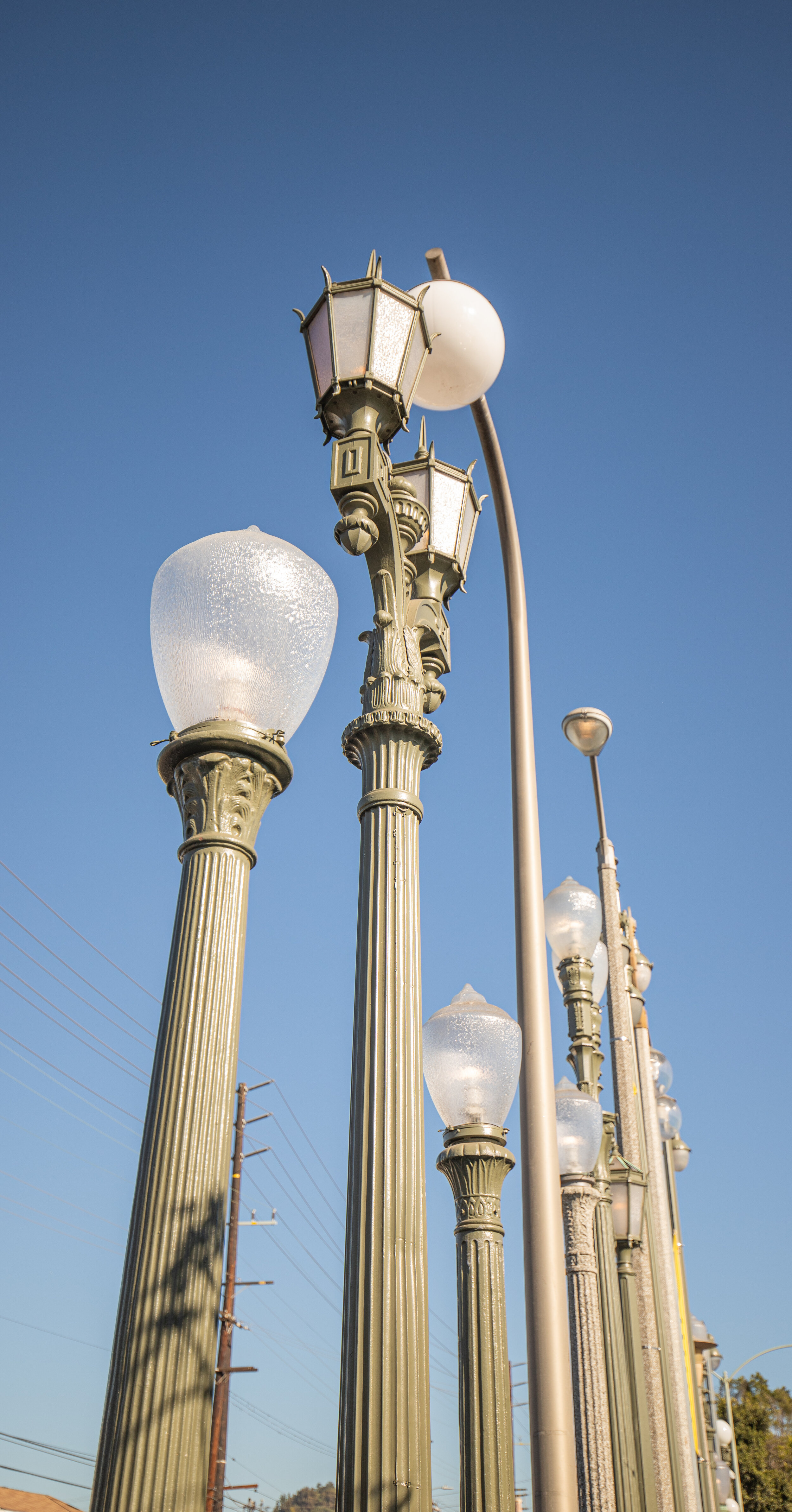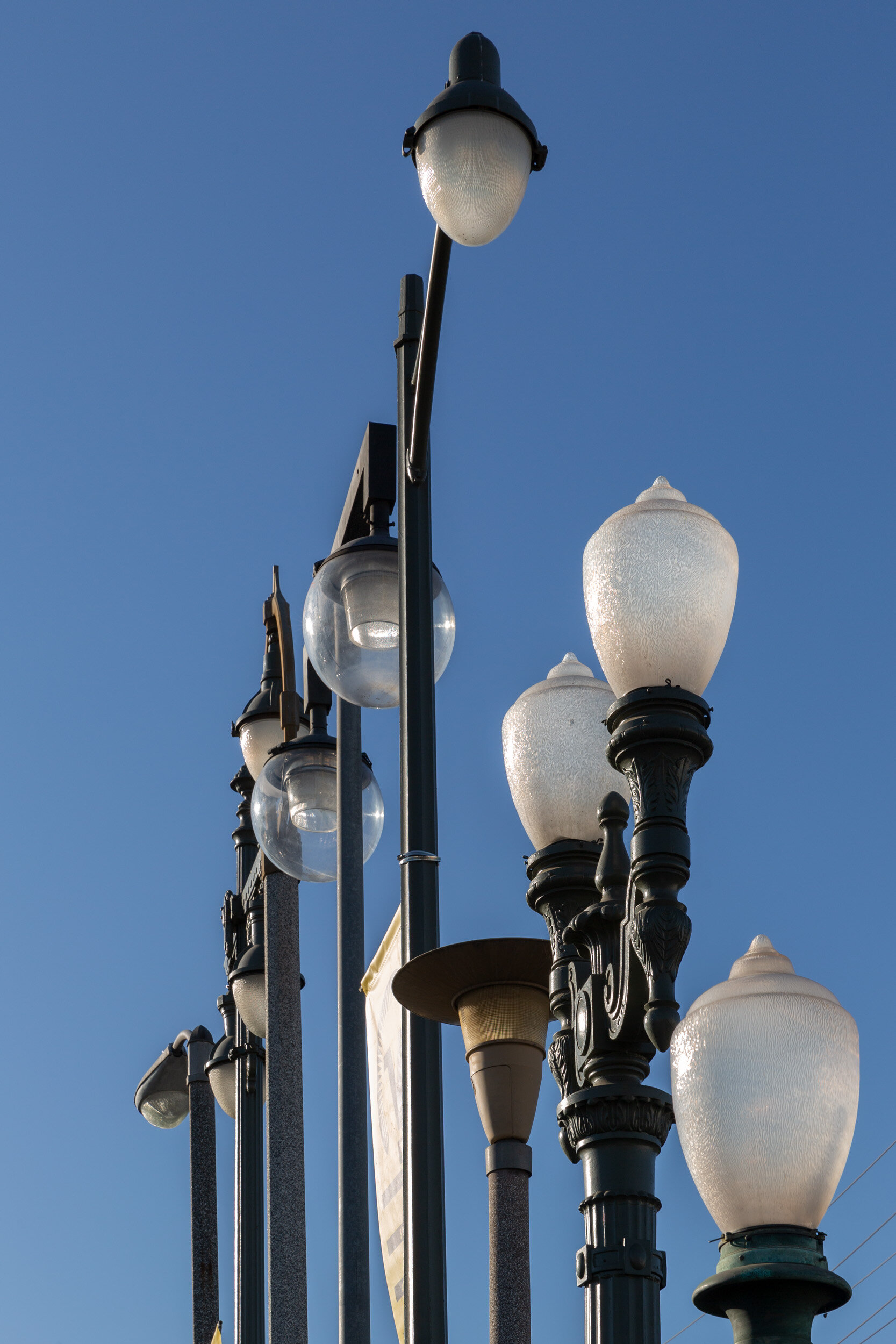The story of Vermonica
Vermonica is an artist-initiated sculpture by Sheila Klein, originally located in the parking lot of a mini-mall. It is a drive-in museum of street lighting. This urban candelabra with its range of materials, styles, and historical periods, points out the variety and sculptural nature of this every day civic appliance while highlighting the efforts of the Bureau of Street Lighting.
Vermonica seeks to uncover romantic truths about the city. By accenting one overlooked layer of our environment, Klein encourages further consideration of all our urban layers.
“In the early 90s I became enamored of streetlights, traffic signals, and other ubiquitous street paraphernalia. I began to conceive of an urban candleabra made of streetlights. Initially, I envisioned it in the Baldwin Hills as I drove to my studio in Inglewood every day. I saw it on the crest of Kenneth Hahn Park with a large base -a kind of LA Italianette. I made an initial drawing of the overall form. I submitted an artist grant to Cultural Affairs to consider this project further. I received the grant of $6000.”
Vermonica, featured on Spectrum New’s SoCal Scene, January 2021
Vermonica is named for the intersection where it was originally installed, Vermont Avenue and Santa Monica Boulevard. The piece was conceived of as an urban monument. The original location in a strip mall parking lot occupies a median not normally considered a location for art. The name riffs on the combination of the two streets where it is located.
“Shortly after receiving the grant the 1992 civil uprising took place in Los Angeles. At that point my idea took a turn. On my way to a meeting at Barnsdall Park, I was part of the Board of Overseers at that time, I saw a site on the corner of Santa Monica and Vermont Boulevard that had been burned down.
I took down the name and number of the developer. I recognized that this would be a great site because it was close to the Bureau of Streetlighting and on a very prominent crossroads. At that time, I was pretty naïve about what it takes to put up a street light. I thought that I would be able to install them on the burned out slab of a business on the corner. For your information, each street light has a unique foundation, bolt circle, depth etc. I contacted Vic LaCagnina who was the owner of the property. We met in his office in the valley. I asked for his permission to install a work on his site and though we disagreed on the politics of the moment he agreed. He also agreed to pay for the electricity to power the piece and gave me an additional $3,000.
Then I went to the Bureau of Street Lighting for one of their early morning meetings with the whole team. At that point it was 75 people. I asked them to join me in this effort of building Vermonica. This was to be a volunteer after work effort and many of these people drive a long way to come to work. 55 out of the 75 people signed up to help me. A cheer went up in the room Vermonica!
I needed permission from the Board of Supervisors to use city employees, equipment, etc. so that no one would hold each other liable initiating a no-fault insurance agreement on both sides. It was unanimous decision. I can’t emphasize what a different time it was than now.”
Original drawing, 1992
The streetlights represented are a mix of contemporary, current, historical, and rare examples of obsolete poles from the city’s past. These 25 poles represent the diversity of the over 400 types currently in use in Los Angeles.
“I decided to use the median in the parking lot, as it appealed to me to make a piece in a place that is not typically used for art, especially then. The linear nature of the piece being a candelabra fit well with the site. It was my intention that it be seen in the sky, from far away, and that you could park next to it in a more intimate way. I started to finalize the form of the piece and the components. At that time, while teaching at Otis Parsons, had a wonderful assistant, Erik Steffenson. We began to refurbish the streetlights one by one, some of which had not been put together for decades. We painted them and we also applied a sacrificial coding for graffiti removal. We worked in their yard day after day. One of the people who volunteered to help me was Jeff Ziliotto, his father had been a street lighter, and he was a street lighter. His involvement was key. He had an incredible zest and interest in street lighting, and he possessed a trove of historical information. We set about creating a document of all the foundations. I built the forms for the foundations, and I hired a friend of mine, Phillip Payne, to do the concrete work. The Bureau of Street Lighting agreed to run the electricity and install of the polls. This was done after work and on weekends and so it took a fair amount of time.”
It was originally installed in 1993. Vermonica was crafted as a gesture of healing: an illuminating monument to mark a site that had gone up in flames during the 1992 Los Angeles riots.

The brochure from Vermonica's opening dedication
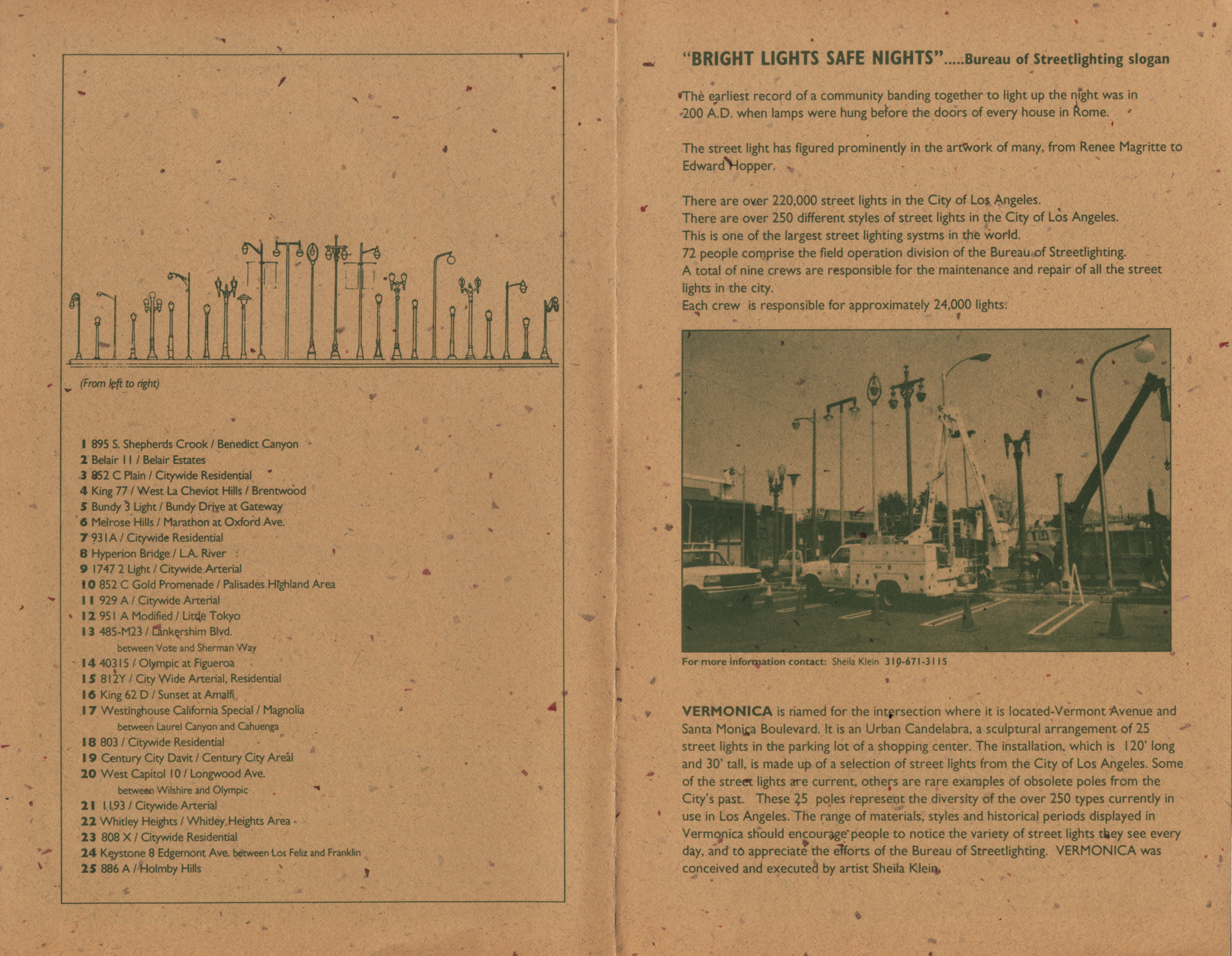
“The opening of the piece was May 5, 1993. The piece was encircled by street lighting trucks in full regalia with all the crews. The neighborhood turned out, Adolfo Nodal, the Head of Cultural Affairs sent a mariachi band, and my dear friend Mary Sue Milliken from Border Grill restaurant sent snacks for the neighborhood. The opening was a mix of all kinds of people from the neighborhood, from the Bureau, from the city, from the art world, and many friends. Huell Howser attended the opening made an episode of his TV show ‘Visiting’ about the piece.”
Though Vermonica was intended to be a year long installation, it stood in its original location until 2017.
“November 21, 2017, I was returning from a day in Seattle when I received a message from a person that I didn’t know. She asked me ‘where is Vermonica?” She had tried to take a visitor there and it was gone. She drove around the block in disbelief. I was shocked - this is a large sculpture 30 feet tall and 120 feet long. It was getting close to the Thanksgiving holiday and the time when I leave for my home in Buenos Aires. The next morning, I went on Facebook and I asked “HEY Los Angeles, where is Vermonica?” Within a few hours I had some answers.”
xVermonica, 2017
In 2017 Vermonica was removed from its original location. The sculpture was removed by the Bureau of Street Lighting without notice. It then materialized in a reconfigured state before the Bureau’s headquarters a few blocks to the east. The strip mall owner had asked for the piece to be removed to accommodate some construction, but engineers for the Bureau had failed to notify Klein or the Department of Cultural Affairs.
Controversy, naturally, ensued. Part of the problem stemmed from the fact that Vermonica occupied a legal gray area: The Bureau had supplied the light poles and Klein had made the work with a small grant from the Department of Cultural Affairs, but the sculpture stood on private property and had never been formally acquired by the city of L.A.
The piece had been moved per a request from the current owner, the Bureau acted swiftly as they had already been planning to move it to their headquarters. Currently the original site is untouched, but slated for development.
“In the next few days, I was bombarded with press interviews. There were many questions from friends and colleagues in Los Angeles. People reached out to support me including Kim Cooper and Richard Schave of Esotouric. They asked me if I wanted to make a statement. They would host it on their website, and they could monitor responses. I was grateful for their involvement. I crafted a statement. They posted it.
From that time forward they continually offered support and never gave up. In May 2019 they received a trove of emails which were extremely damning with regard to my intellectual property and the cities intentions, it was at that point that the city did the right thing and agreed to restore the piece in my vision.”
In 2020, Vermonica was reinstalled to Sheila Klein’s vision. With the help of many, especially Kim Cooper and Richard Schave of Esotouric, Loren Amador of Amador Architecture, and the LA Bureau of Street Lighting, Sheila Klein was able to find a site very close to Vermonica’s original location and restore the piece to her vision.
Original details, such as banners and plaques naming each street light, were reincorporated into the piece.
Construction took place from late October to early December, 2020.
On December 1, 2020, Sheila Klein flipped the switch to mark the opening of Vermonica’s new location.
Sheila Klein stands with Loren Amador, the architect who helped being Vermonica back to its original glory.
Vermonica’s future is no longer a question. It was acquired by the L.A. public art collection in 2020.

